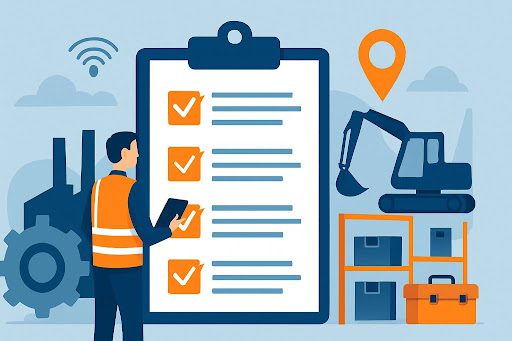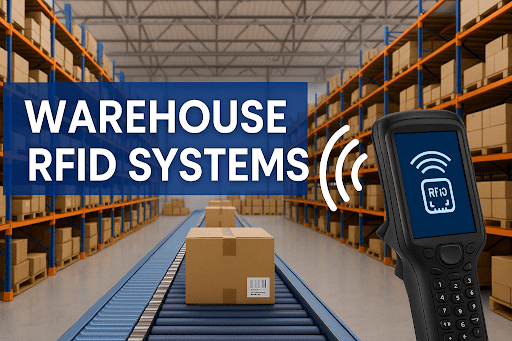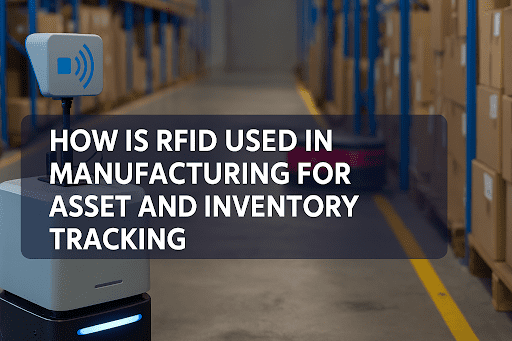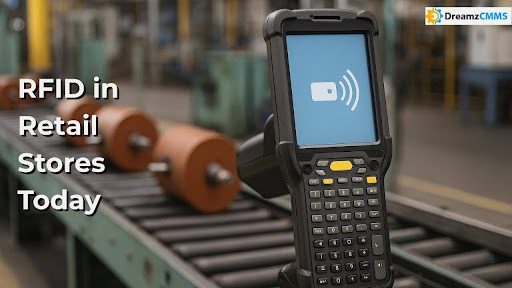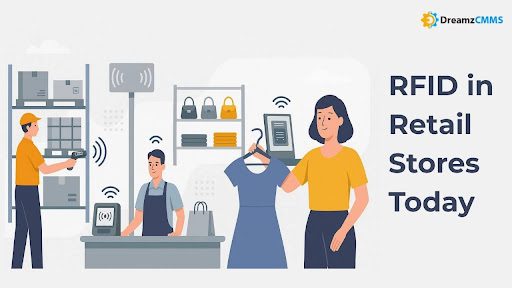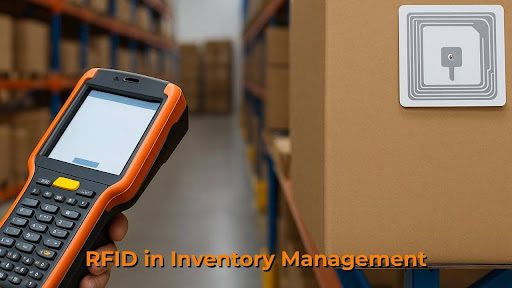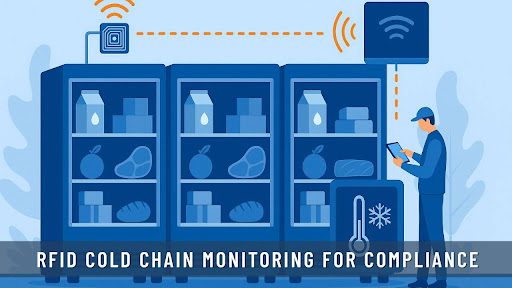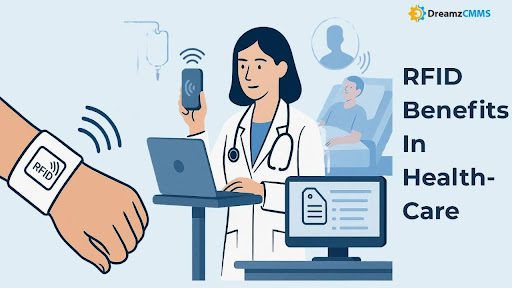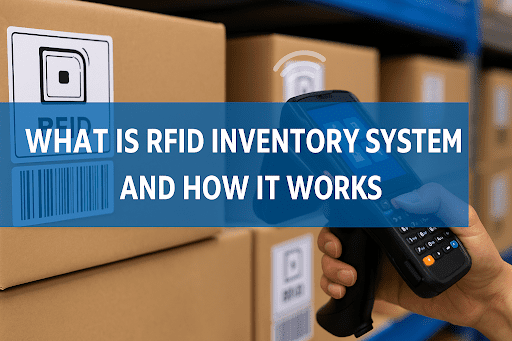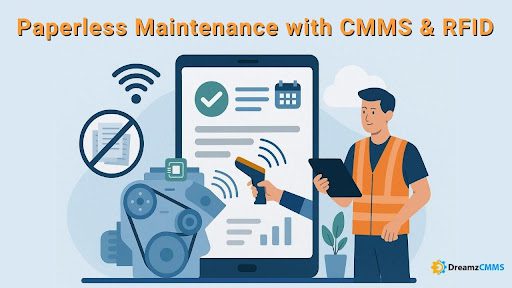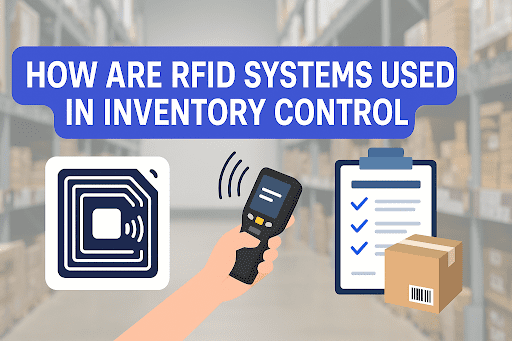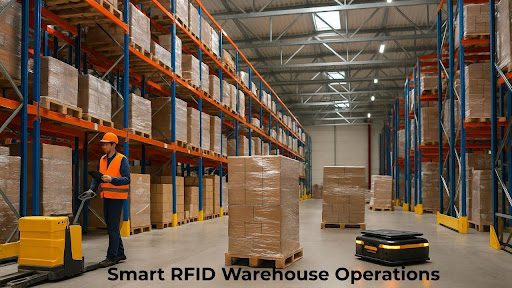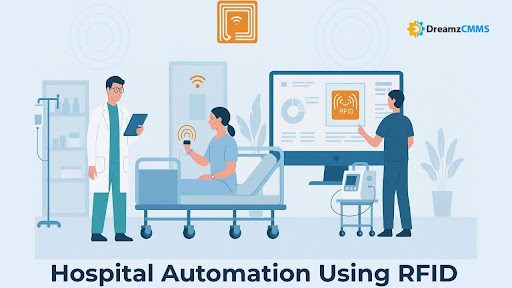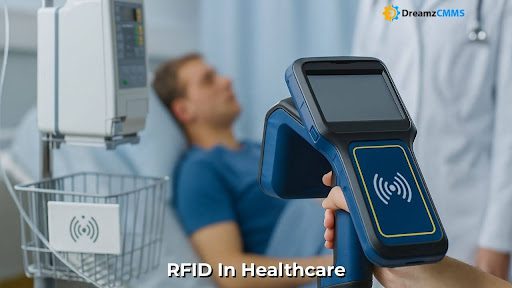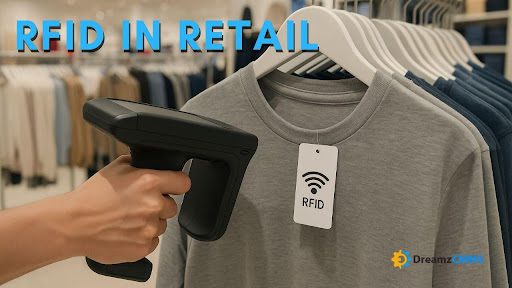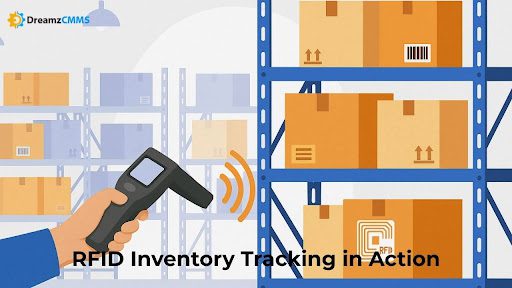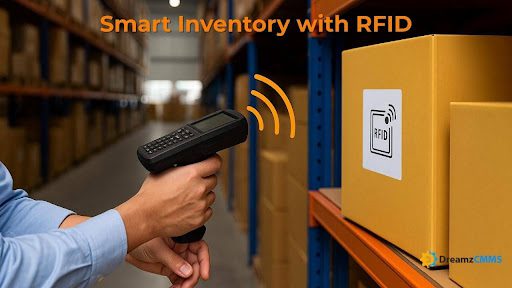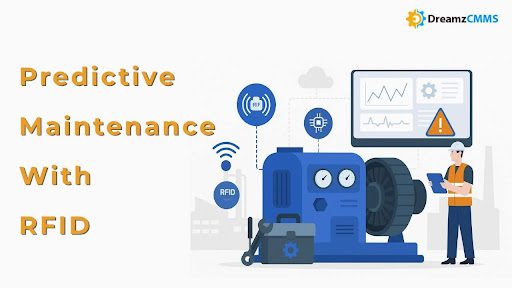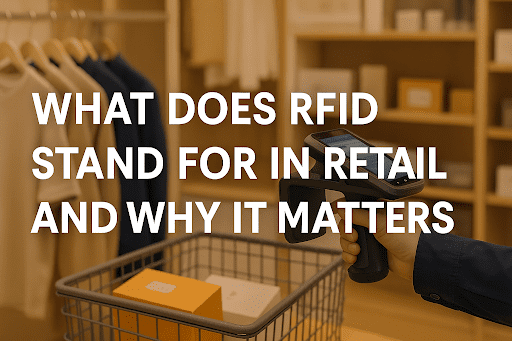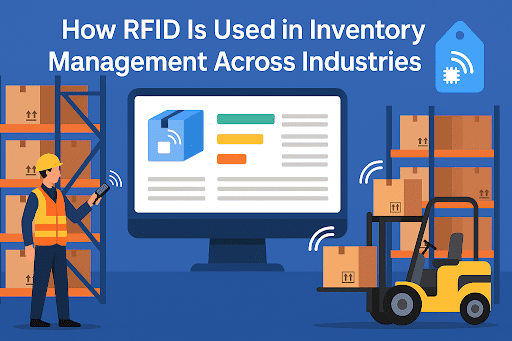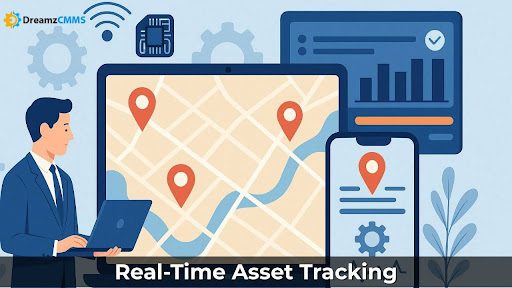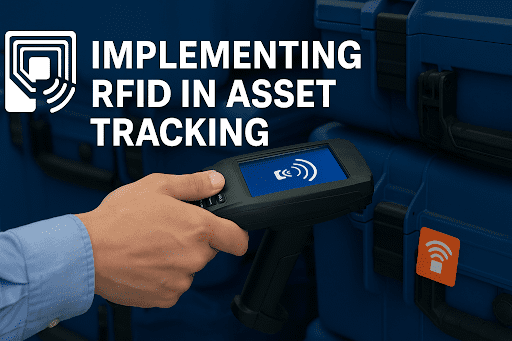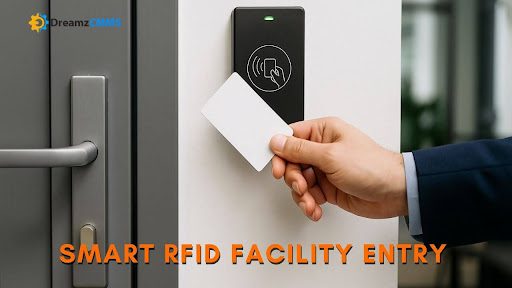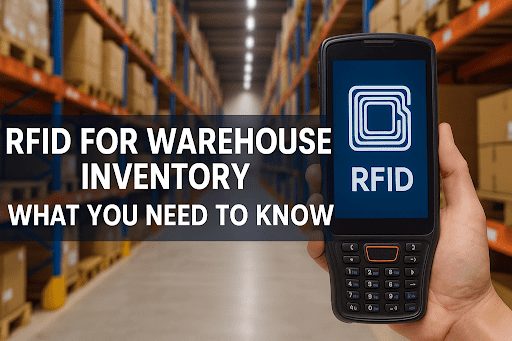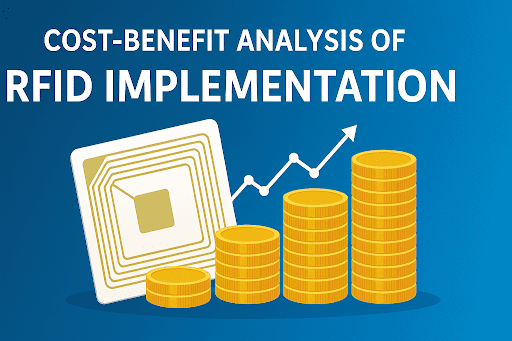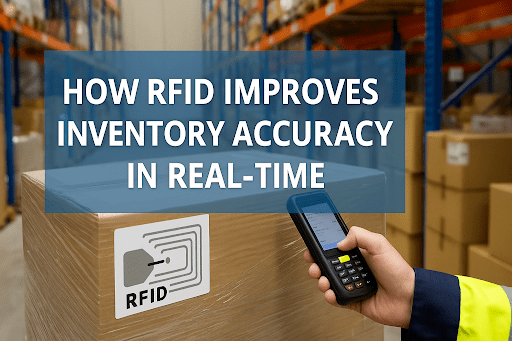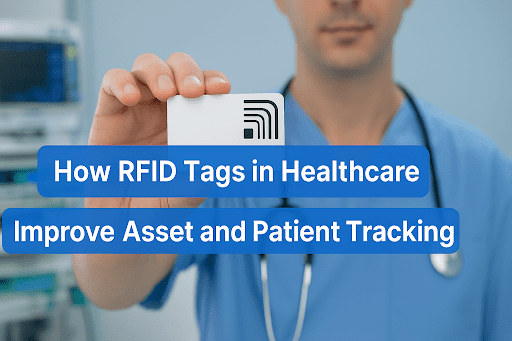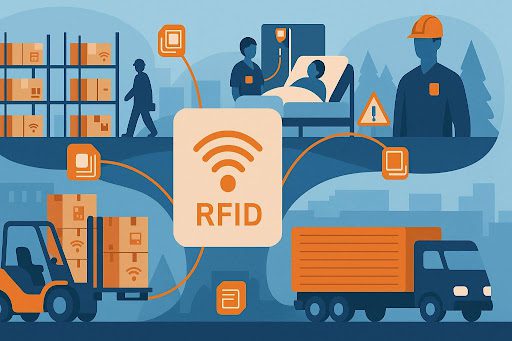 BACK TO Blog
BACK TO Blog
Asset Rental Management
RFID Asset Tracking
Organizations operating in a modern world require real-time information systems and automation to eliminate asset mismanagement alongside operational blind spots. Organizations depend on RFID technology to address their needs. Organizations adopt RFID asset tracking as their preferred modern business standard yet organizations need to understand its fundamental principles. This strategic guide explains RFID tracking technology for assets, explores its real-world use cases, and reveals how integrating RFID
- July 30, 2025
- DreamzCMMS Team
- 13 minutes read
- July 30, 2025
- DreamzCMMS Team
- 13 minutes read
Organizations operating in a modern world require real-time information systems and automation to eliminate asset mismanagement alongside operational blind spots. Organizations depend on RFID technology to address their needs. Organizations adopt RFID asset tracking as their preferred modern business standard yet organizations need to understand its fundamental principles.
This strategic guide explains RFID tracking technology for assets, explores its real-world use cases, and reveals how integrating RFID into your asset management ecosystem—especially with CMMS—can transform efficiency, accountability, and decision-making.
First, Upgrade Your Maintenance Strategy
Asset Maintenance Management Software
The integration of RFID and automated maintenance through DreamzCMMS will establish a connection between both systems.
RFID Overview for Decision-Makers
The wireless communication technology RFID uses electromagnetic fields to automatically track physical assets through Radio Frequency Identification tags. The main advantage of RFID technology over barcodes lies in its ability to capture data without the need for visual contact.
RFID provides leadership and operations managers with an efficient asset tracking solution to achieve real-time asset visibility and decrease operational inefficiencies during their evaluation of tracking systems. The system establishes many strategic asset tracking approaches which allow companies to make data-driven choices quickly and precisely.
RFID Tags and Readers Explained
The core components of an RFID asset management system consist of RFID tags alongside RFID readers. The technologies collaborate to provide real-time asset tracking along with automatic data logging and precise monitoring of assets across their entire lifespan.
RFID Tags
RFID tags represent tiny devices that contain microchips with built-in antennas and are designed to be resistant to damage. The tracking system attaches RFID tags to physical assets which include equipment, tools, containers, documents or vehicles. Each RFID tag maintains its own distinct identifier and contains the option to store programmable data which includes asset type and maintenance records and environmental metrics.
RFID tracking technology for assets uses two distinct categories of RFID tags.
Passive RFID Tags
These tags do not have an internal power source. RFID tags obtain their power from RFID reader signals before they can activate their data transmission function.
The small size along with low price point and extended lifespan make this technology useful.
The technology works best for short distance tracking of documents and retail items and facility asset management because its reading range extends from centimeters to meters.
Active RFID Tags
Each tag contains a built-in battery which allows it to transmit signals either continuously or at scheduled intervals without needing a reader nearby.
Active RFID Tags provide extensive reading distances which exceed 100 meters and enable both continuous asset monitoring and condition status detection.
Active RFID Tags are best suited for tracking expensive equipment along with fleets and cold chain products and distant field assets.
Tag materials exist to protect RFID devices from water while also preventing tampering and ensuring industrial-grade durability.
RFID Readers
RFID readers function as devices that generate radio waves to activate RFID tags and extract their returned information. Through RFID readers organizations connect physical assets to digital systems which transmit tag data to centralized databases or CMMS systems equipped with RFID capabilities.
Common types of readers include:
- Handheld Scanners
The portability of these readers makes them suitable for personnel to use in manual asset scans and spot checks and audits conducted on-site. These readers provide essential functionality for mobile field teams and inventory managers.
- Fixed Readers at Gateways
Readers installed at important access points including facility entrances, loading docks, warehouse zones and tool cribs enable automatic asset detection and logging functions. The system uses these readers to track tagged assets automatically when they pass through the designated checkpoints for access control and movement tracking purposes.
- Integrated Mobile or IoT Platforms
Advanced systems embed readers into IoT gateways, mobile CMMS applications, or automated kiosks. Advanced platforms support strategic asset tracking through condition-based alerts and geofencing and automated work order generation capabilities.
System components frequently integrate antenna arrays along with middleware solutions which enhance reader performance to enable businesses to detect thousands of tags during each second in complex operational areas.
Working Together: Tags + Readers = Real-Time Tracking
RFID tags function together with readers as a complete automated system for data capture. The system receives continuous updates of asset locations and usage history and condition data when assets move between facilities or through field environments. This supports:
- Real-time asset visibility
- Reduced human error
- Time-stamped activity records
- Data-driven maintenance scheduling
- Inventory reconciliation and audit readiness
The appropriate RFID Asset Tracking Software enables businesses to control and maintain thousands of assets distributed across various locations with complete certainty.
How RFID Improves Asset Tracking
Traditional asset tracking systems that incorporate barcode scanners and Excel logs and manual checklists prove time-consuming and error-prone because they require human involvement. The traditional tracking methods produce lost items and delayed reporting and inaccurate inventory counts and reactive maintenance. RFID asset tracking technology provides businesses with an automated intelligent solution that scales better than traditional methods.
RFID tracking technology enables the entire tracking process to be digital and automated to improve asset tracking in multiple essential ways.
Faster Scanning
Barcodes require employees to locate and properly orient and manually scan individual items which extends the overall process duration. The automatic detection of RFID tags occurs when they approach a reader without the need for direct contact. Scanning each item individually is not necessary because operations can continue without interruptions.
The elimination of manual scanning results in major time reductions for inventory counts and equipment checkouts and tool crib audits and daily asset movement logs thus enabling staff to perform higher-value work.
No Line-of-Sight Required
RFID asset management systems function differently from barcode systems because they do not need physical line-of-sight between the tag and scanner. RFID readers detect tags through three main mediums which include:
- Cardboard boxes and pallets
- Plastic bins and containers
- Clothing, fabric, or product packaging
- Walls or vehicles (in the case of long-range active RFID)
The RFID tracking system provides superior advantages in warehouses along with hospitals and industrial facilities because it detects tags through various barriers including stacked or enclosed assets and items hidden from sight. The system makes asset management simpler for all complex facilities.
Simultaneous Detection
RFID tracking stands out from traditional tracking methods because it allows simultaneous detection of many tags at once. An RFID reader can process multiple RFID tags simultaneously while barcode systems must perform sequential scanning.
This is especially useful for:
- Mass inventory audits
- Warehouse shipment validation
- Entry/exit control at loading docks
- Rapid tool room or medical cart reconciliation
The system achieves higher speed and precision through simultaneous detection which also minimizes human weariness and maintains current system information.
Real-Time Logging
RFID-tagged assets automatically create real-time records of all their interactions including movements and usage events and temperature changes and access events. The constant flow of information establishes the base for:
- Instant inventory updates
- Usage-based maintenance triggers
- Compliance audit logs
- Chain-of-custody tracking
- Asset lifecycle analytics
When paired with a CMMS that includes RFID integration these logs will automatically produce work orders while identifying underused assets to enhance equipment availability.
Smarter Workflows and Greater Accuracy
RFID automation of tracking operations reduces human mistakes and depends less on manual logs and ensures better data consistency. Staff members avoid wasting time looking for missing items or dealing with spreadsheet mismatches or manual inventory software updates.
Instead, organizations enjoy:
- Streamlined workflows across departments
- More accurate inventory forecasting
- Improved preventive maintenance planning
- Faster response to asset theft or misuse
Asset tracking through RFID integration enables organizations to track their assets faster and with improved accuracy and strategic capability. RFID provides simple daily operations and enables long-term efficiency improvements along with better compliance and reduced costs which proves it superior to traditional tracking systems.
Want to take your tracking to the next level? Our RFID Asset Tracking Software provides real-time visibility and intelligent asset control for complete tracking success.
Strategic Asset Tracking Methods Using RFID
RFID serves beyond tracking purposes because it functions as a strategic enabler. Businesses can use RFID technology to establish:
- Asset Geofencing – Asset Geofencing triggers alerts when assets cross the boundaries of specified areas.
- Usage-Based Scheduling – The system performs Usage-Based Scheduling by tracking operational periods to schedule predictive maintenance.
- Check-in/Check-out Logs – The system generates check-in and check-out records that show asset usage details including usage time and location and user identity.
- Cold Chain Monitoring – RFID enables the continuous monitoring of temperature-sensitive goods in regulated settings such as food and pharmaceutical applications.
Learn about RFID implementation for cold chain logistics through our RFID for cold chain logistics
RFID asset control relies heavily on these essential strategies particularly in industries that require high uptime alongside strict compliance standards.
RFID Tracking Benefits for Businesses
Organizations from different scales dedicate funds to RFID tracking solutions for assets because of the immediate advantages they provide:
1. Real-Time Asset Visibility
Every facility, warehouse and job site contains complete asset details which include location data and usage records and current condition information.
2. Theft and Loss Prevention
The system detects unauthorized movements of assets through automated tracking logs that minimize asset disappearance.
3. Efficient Auditing and Compliance
The implementation of RFID technology eliminates the requirement for manual inventory counts. The system automatically creates audit logs.
4. Labor Cost Reduction
The elimination of manual tasks including scanning and logging and inventory checks results in increased productivity.
5. Improved Decision-Making
RFID data enables leaders to obtain valuable insights which help guide their procurement decisions as well as their maintenance planning and investment allocation processes.
RFID in Inventory Management
RFID technology revolutionizes inventory management through its enhanced accuracy and faster operations and increased operational speed.
- Live Inventory Views: The system provides live inventory displays that show real-time data across multiple locations.
- Automated Replenishment: Get alerted when stocks fall below threshold.
- Reduced Shrinkage: Unauthorized removals are tracked and flagged.
Large warehouse operations gain advantages from customized implementation of RFID systems.
Check out our complete warehouse RFID systems guide
If you manage leased equipment or rotating assets, consider integrating RFID with an Asset Rental Management Software to enhance control, invoicing, and asset turnover rates.
CMMS with RFID Integration: A Complete Solution
When a CMMS system integrates with RFID technology it adds increased value through the ability to link asset maintenance tracking with real-time usage records.
- Automated Work Orders: Service tickets are automatically triggered by CMMS when RFID sensors identify unusual readings including temperature and vibration.
- Historical Maintenance Logs: Every scan of an asset generates an update to service history and usage patterns.
- Parts Availability Checks: RFID-tagged spare parts inventory is directly tied to work order creation.
Organizations can track and act simultaneously through this synergistic system which leads to proactive maintenance and improved scheduling and operational continuity.
You can discover all the advantages through our RFID Asset Tracking Software
RFID Tracking Use Cases Across Industries
RFID technology finds applications in multiple industries because of its wide range of applications:
Construction
Secure high-value tools and machinery. Trigger alerts when assets leave the site or are moved without authorization.
Healthcare
The monitoring system tracks medical devices alongside surgical tools and medications. Prevent shortages and ensure compliance.
Facilities Management
RFID technology enables tracking of HVAC equipment together with fire safety devices and custodial tools across extensive campuses.
Retail and Warehousing
Streamline stocking and reduce shrinkage. RFID-enabled shelves and checkout scanners speed up operations.
Manufacturing
Track parts through the production cycle. RFID-enabled tools enable runtime tracking which leads to scheduled maintenance.
The listed RFID tracking applications show how this technology delivers quick return on investment in different industrial sectors.
RFID Tracking vs Traditional Methods
The following analysis presents a comparison between RFID tracking systems and conventional tracking approaches:
| Criteria | Traditional Methods | RFID Tracking |
| Speed | Manual & slow | Automatic & real-time |
| Human Error | High | Minimal |
| Labor Required | High | Low |
| Visibility | Low | High |
| Scalability | Limited | High |
| Cost Over Time | Higher (manual) | Lower (automated) |
RFID technology outperforms other methods for businesses which need to track numerous assets or maintain strict tracking protocols.
Blockchain and RFID: A Next-Level Match
Businesses that need tamper-proof asset histories including pharmaceuticals and defense and high-value logistics benefit from combining RFID technology with blockchain systems.
The blockchain system prevents any modifications to RFID-collected data while maintaining its integrity through the following features:
- Immutable Asset Records
- Global Supply Chain Traceability
- Improved Trust Between Partners
Learn how blockchain enhances RFID asset tracking
This combination helps organizations implement better compliance systems and enhance audit capabilities for multi-party partnerships.
RFID Data for Leadership Insights
The data from RFID systems is used by executives and managers to gain leadership insights about:
- Identify underutilized equipment
- Predict maintenance costs and downtime
- Optimize asset ROI
- Forecast supply shortages
Organizations transform RFID from operational utility into strategic planning tool through these insights which help them decrease costs and improve service quality.
Overcoming Challenges in RFID Deployment
RFID implementation provides multiple advantages yet businesses need to address certain implementation factors.
- Cost of Hardware: The price of RFID hardware tags and readers changes based on their operational range and durability level.
- Infrastructure Requirements: Readers need installation in all tracking zones for the system to function properly.
- Data Overload: Systems need filters and dashboards which convert raw data into useful insights during data processing.
- Training and Adoption: Staff members require training about using RFID scanners alongside mobile apps and integrated platforms.
A deployment plan should start with a pilot test to optimize tag implementation and data acquisition processes.
Choosing the Right RFID Asset Management System
The market offers different types of RFID systems that have distinct characteristics. Organizations should evaluate the following features when choosing an RFID asset management system:
- Compatibility with passive and active tags
- Real-time tracking features and alerts
- Integration with CMMS or ERP
- Mobile accessibility
- Analytics dashboards for strategic planning
An effective system provides operational efficiency from RFID tracking and extends to accommodate future growth.
The Future of RFID in Asset Tracking
The path forward for RFID technology shows potential to increase its value through emerging trends.
- IoT Integration: RFID tags which include sensors enable environmental monitoring and automatic response activation through IoT systems.
- AI for Predictive Analytics: Artificial intelligence-based predictive analytics examines RFID patterns to identify irregularities and forecast maintenance requirements using machine learning models.
- Blockchain for Security: Ensures every RFID scan becomes part of an immutable asset history.
RFID technology will establish a basis for developing autonomous asset ecosystems through current emerging trends.
Final Thoughts
What exactly does RFID asset tracking entail? Businesses gain real-time data along with automated operations and actionable insights through this advanced asset monitoring system. RFID technology provides unmatched value to industries through its ability to reduce errors while increasing visibility.
The combination of RFID technology with a strong CMMS platform transforms it into a strategic tool which enables businesses to maintain uptime and increase accountability and profitability.
Ready to Elevate Your Asset Management?
The all-in-one solution DreamzCMMS enables smart asset tracking along with maintenance automation.
Examine how RFID combined with CMMS and real-time analytics enables business operational transformation.
Ready for More?
Talk to one of our CMMS experts and see how DreamzCMMS can simplify your maintenance operations.
Book a free consultation
